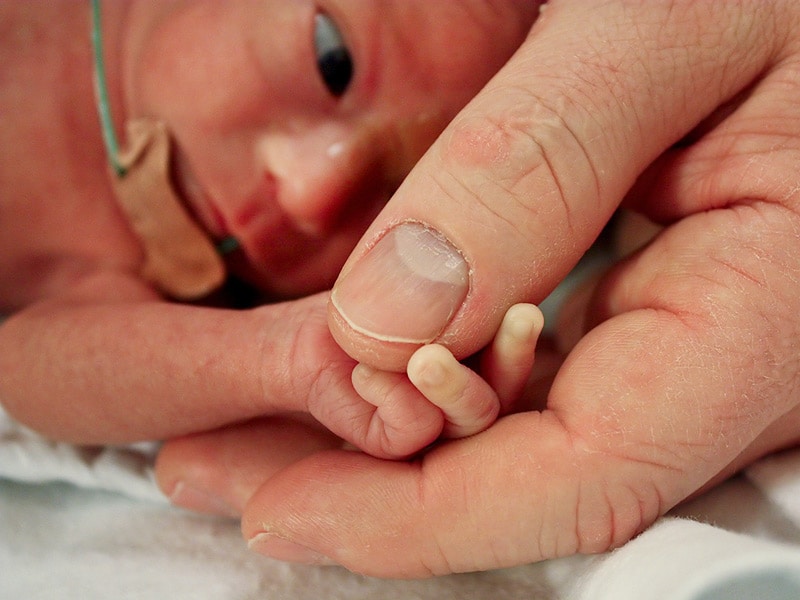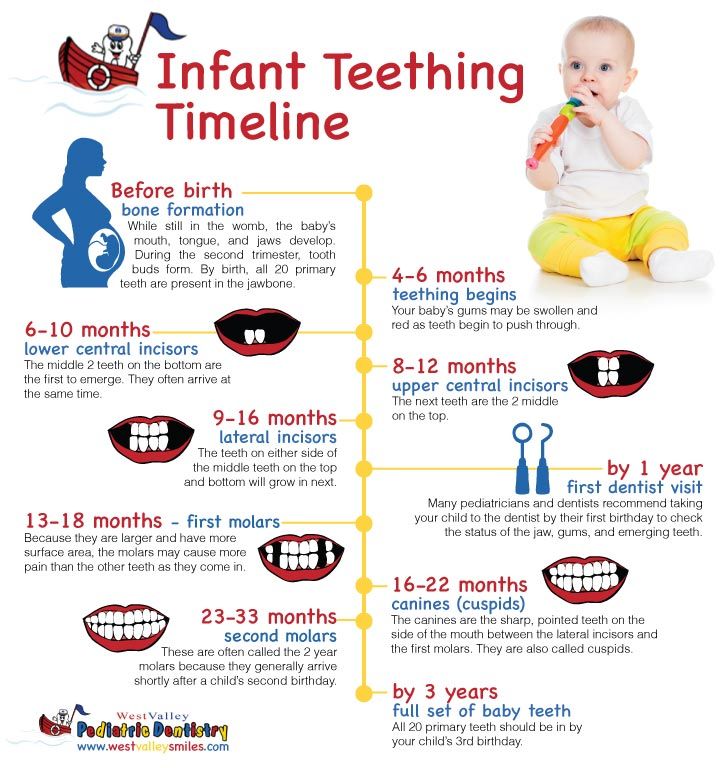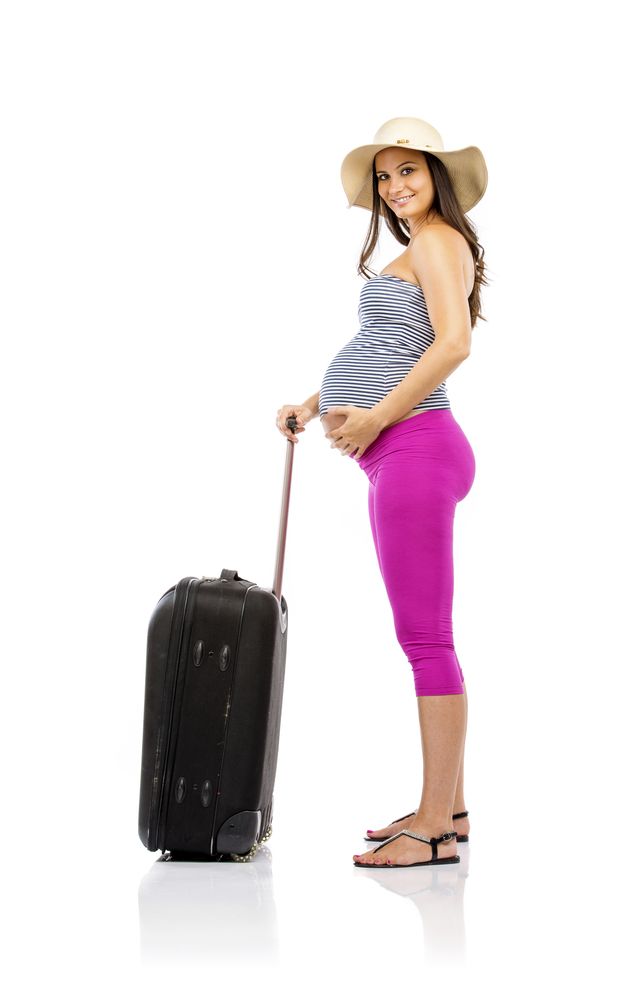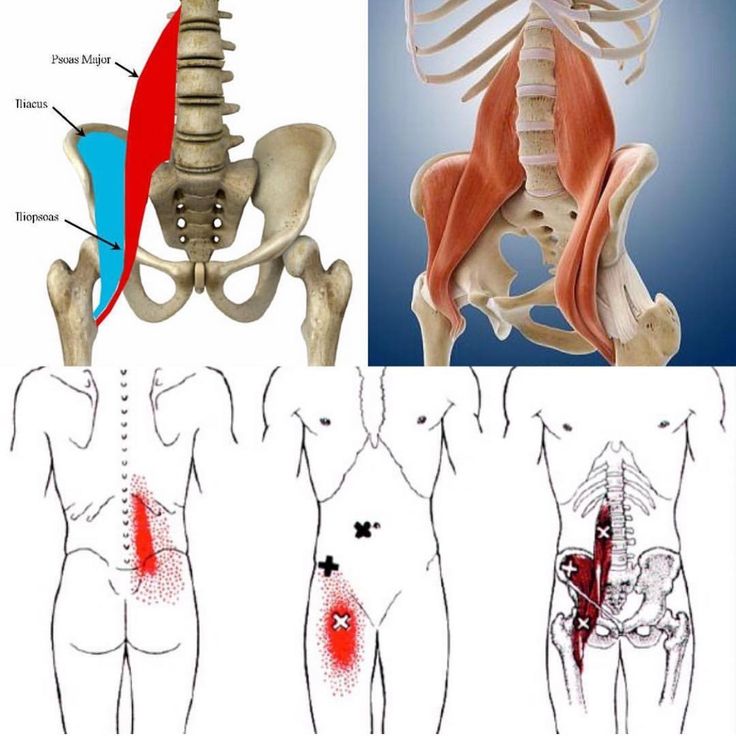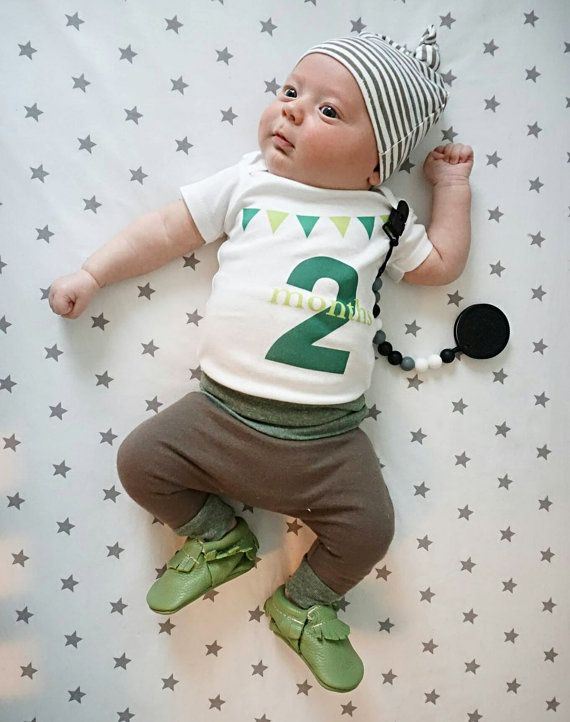When should babies feed themselves
4 Mistakes that Slow Baby Self Feeding
Feeding your baby real food is an important step for all parents. But baby self feeding is a goal for all parents, especially during the first year of life.
The stakes are high for developing healthy food preferences and learning to eat, so don’t let these four common mistakes slow your baby down.
Baby feeding and the journey that goes with it is not always smooth-sailing, or easy.
In my many years of working with new mothers as a pediatric nutritionist, I know that the decisions made in this first year are always made with good intentions.
However, some decisions are made out of fear, hype, or lack of knowledge.
As a result, feeding mistakes that slow your baby’s abilities around self feeding can be made.
Don’t let them get in the way of really raising a healthy eater down the road.
Why is Starting Solids a Challenge?In a nutshell, the quick pace of food transitions your baby will make in the first year is the crux of most baby feeding mistakes.
In a period of 6 months, your baby will move from an all liquid diet to eating your family’s mealtime food.
That means the food transitions are fast.
Once you get used to one thing, it’s time to move on to the next.
For instance, you and your baby master pureed foods.
But, now your baby wants finger foods and seems unsatisfied with baby cereal.
Yes, the pace in the first year of life with food is quick.
Another challenge is the wide range of nutrients babies need in the first year.
Key nutrients for brain development, bone growth, and sufficient calories and protein for weight gain and kid’s growth should be top of mind.
Being mindful of these and fitting them all in can feel overwhelming.
If that isn’t enough to worry about, the repercussions of moving too slowly with food transitions can have its own set of ramifications.
For example, your baby may lose interest in infant rice cereal if they see it every day and at most meals.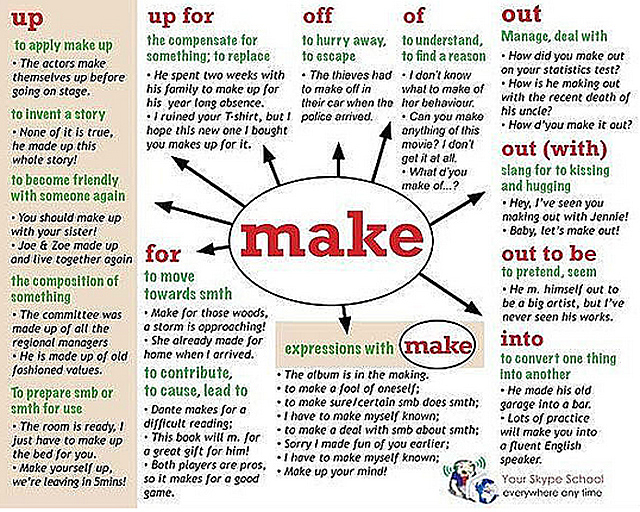
Or, your baby may tire of exploring solid foods if she isn’t progressively challenged with new textures and flavors.
She may even prefer purees, baby food pouches, or get stuck on a liquid diet (hello, sippy cups of milk), if she isn’t challenged with more food flavors and textures.
If you’re like most parents I know, you want to get the baby food stages right.
From setting a reasonable baby feeding schedule to knowing when to start solids and make important baby food transitions, not only do you need to know what to do, you need to know what not to do, as well.
Signs You’re Hindering Self FeedingIf feeding your baby gives you a nagging feeling that things are getting off track or aren’t going as well as planned, you may be making some feeding mistakes.
Whether you need more information, or got the wrong advice, you may unknowingly be caught up in some very common mistakes.
If your baby isn’t gaining weight as predicted, is struggling with the spoon or baby led weaning, or if transitioning to a balanced meal plan isn’t going as well as you had hoped, you might be hindering your baby from moving forward with eating.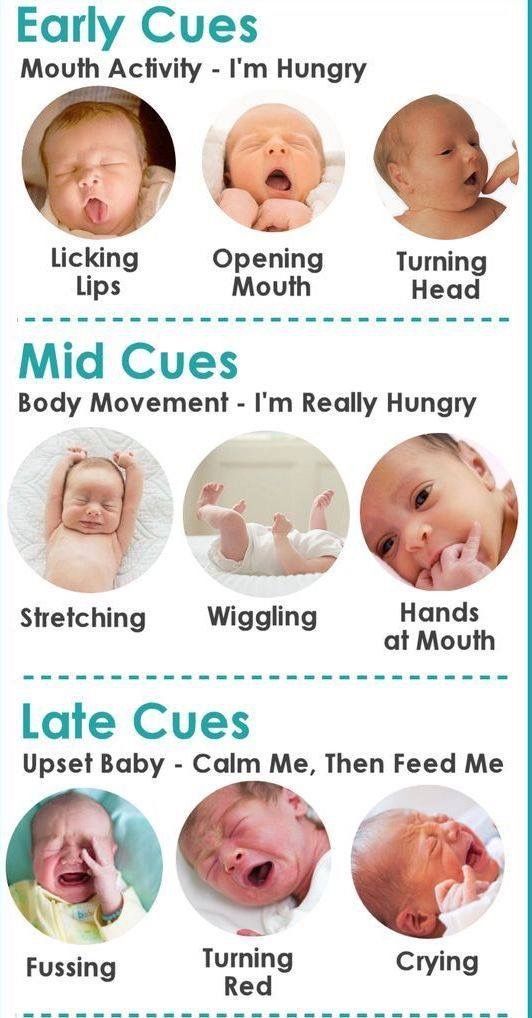
Your feeding style and approach may be counterproductive, especially if you’re using negative feeding practices.
Unfortunately, these can interfere with your baby’s eating, development, and food learning.
4 Self Feeding Mistakes You’ll Want to AvoidIn my line of work, I see several mistakes parents make when feeding their kids.
It’s not that I look for snafus, it’s just that when parents are really struggling, they show up on my doorstep.
As a way to help you side-step some of these challenges, I’ve outlined the top four feeding mistakes I see parents make with their baby.
Some are related to the process of feeding, while others involve food selection.
Mistake # 1: Trying to Keep Baby Clean while EatingIn the quest to stay clean and tidy (and lessen the laundry load), you may be swiping your baby’s mouth with a washcloth after every bite, staying with spoon feeding (because it’s cleaner), or avoiding messy foods to cut down on the time and effort it takes to clean up after a meal.
Why is this a mistake?
It robs your baby of important learning experiences, such as exposure to different textures, smelling food completely and learning how to manipulate food using his hands and mouth.
Serious investigation happens during meal time, and there’s no better way to learn about food than to get down and dirty with it.
Those pictures you see of babies covered head to toe in yogurt, spaghetti sauce and cake?
Yeah, that’s what I mean.
Case in Point:Long ago, I taught one of my clients to let her baby self feed with a spoon. I asked her to refrain from using the washcloth until the end of the meal, and charged her with the task of offering her daughter more food variety.
After implementing these interventions, both mom and baby started having a grand time with meals!
How to Keep Baby Clean While EatingUse the kitchen sink as a back-up bathtub.
Stock it with towels, soap and plastic measuring spoons and cups so your baby can go from high chair to kitchen tub (with supervision, of course) for a quick clean up.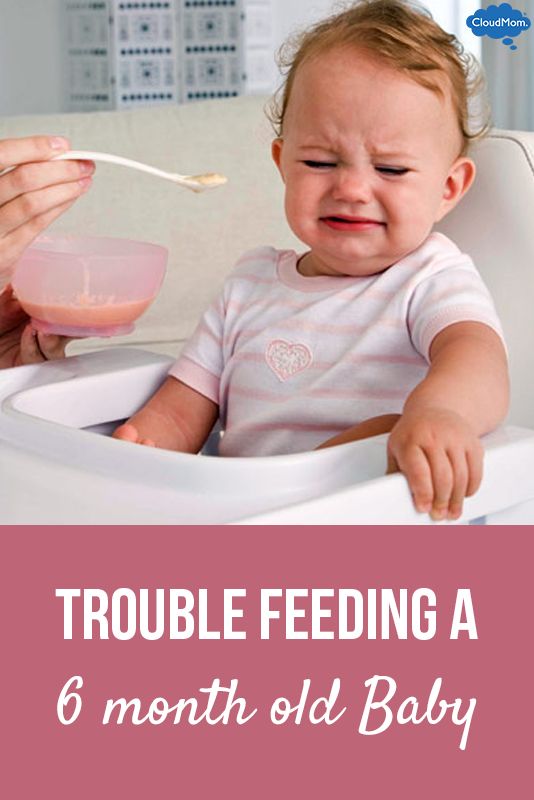
Get the Food & Nutrients for Baby’s Brain!
Mistake #2: Spoon-feeding Your Baby for Too LongThis ties into #1 as a way to keep a cap on the mess.
But also, there may be a misconception that babies need to be spoon-fed for a year.
Not true.
Babies can begin the transition to chopped, table foods around 8 months of age.
And if you’re a follower of baby led weaning, you know that solids can be introduced at 6 months.
By one year, your baby should be eating table food. In other words, the food your family is eating.
You’ll just modify this into age-appropriate textures (shredded, chopped, etc), and encourage baby self feeding (with assistance as necessary).
Your baby should also be using an open-top cup with small amounts of liquid so that spills are minimal.
Of course, follow your baby’s developmental progress and cues for readiness to see when the time is right to transition to more textured finger foods.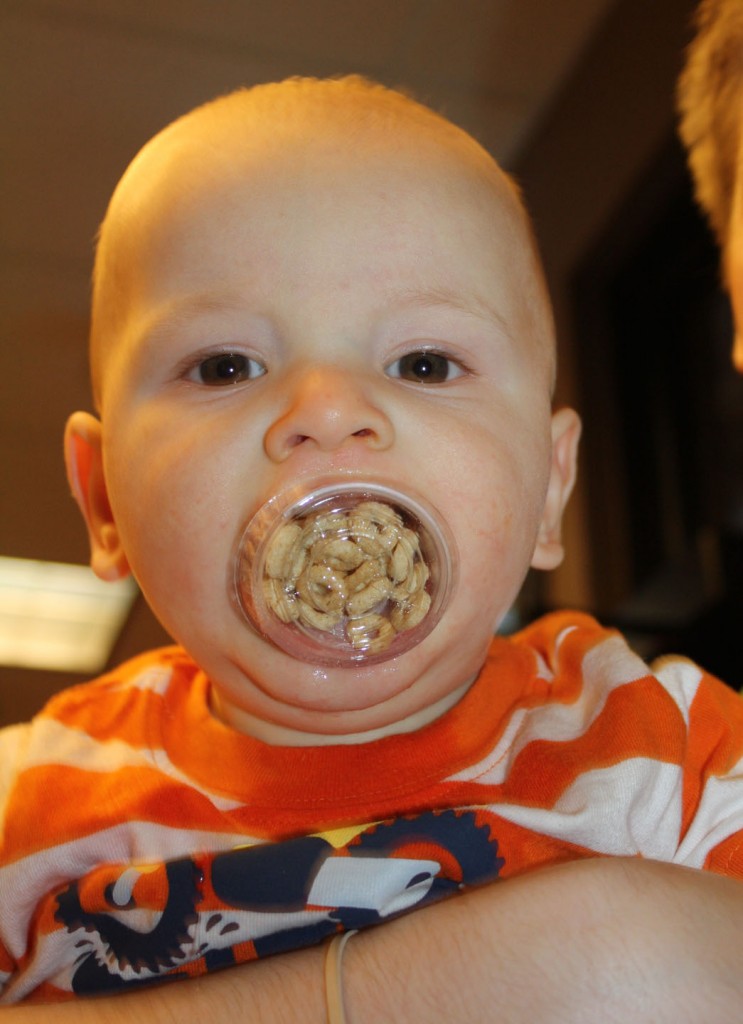
If you’re testing solid foods with a baby led weaning approach, be sure to read about iron and baby led weaning in this post or grab my up-to-date, step-by-step book called The Smart Mom’s Guide to Starting Solids.
It includes advice for spoon-feeding, baby led weaning and guidance for using both to optimize nutrients and self-regulation of eating.
When to Stop Spoon Feeding BabyBaby Ben was 14 months and still being spoon-fed.
He came to me because he wasn’t gaining weight and his length had fallen behind.
He was simply disinterested in the spoon—he wanted to feed himself, and he didn’t want mush anymore—he wanted the real food his family was eating.
Most babies will want to start self feeding between 6 and 8 months.
This usually coincides with the development of the pincer grasp.
While Ben’s mom was understandably afraid to give up spoon-feeding (because he wasn’t growing well and she wanted to be sure he ate enough), once she introduced table foods, gave him some independence, and let him eat to his own satisfaction, Ben started to thrive again.
Most babies will want to start self feeding between 6 and 8 months. This usually coincides with the development of the pincer grasp. #startingsolids #selffeeding Click To Tweet
Mistake #3: Offering Foods that are Too HealthyI believe all babies should receive real, natural, unadulterated foods of all flavors, with an emphasis on food introduction and lots of food variety and exposure.
But I see a trend in feeding babies that emphasizes fruits, vegetables and whole grains.
This can become a problem because babies have limited stomach capacity and these foods are filling.
When your baby’s tummy is full, there’s a risk of missing other important foods and nutrients such as choline and DHA.
Whole grains, fruits and veggies also tend to be low in fat, which is an important nutrient for babies and their brain growth.
Certainly babies need these healthy foods, but they also need meat (or non-meat substitutes such as beans), fortified cereal, healthy fats and dairy (or fortified non-dairy) sources.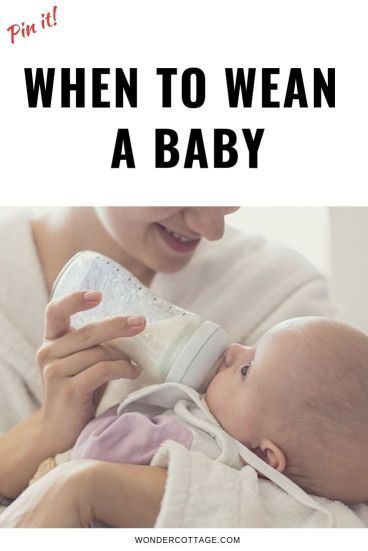
In fact, if I had the opportunity to re-write the food introduction guidelines, I’d advise the following:
- Meat First (because it’s full of iron, zinc, B vitamins, choline and other nutrients important for brain development.)
- Vegetables (because these are a learned taste and flavor and need more time and exposure for acceptance.)
- A variety of iron-fortified whole grains, fruit, and dairy products (or non-dairy alternatives if necessary, introduced as yogurt and cheese or as a baked in ingredient. (Note: no liquid milk until one year of age.)
Of course, there’s eggs, fish, peanuts, and nut butters — the food allergens that need to be introduced before 12 months, too.
My stance on “which foods first” is based on nutrient priorities and your baby’s budding flavor palate.
[Read: How to Introduce Peanuts to Your Baby]
Case in Point:Josh, at 13 months, was eating a high fiber diet, filled with whole grain breads, lots of vegetables and fruits, and very little added fat.
In fact, his mom stated,
“I never thought to add fat to his meals—I thought that would be unhealthy.”
Josh’s diet appeared very healthy on paper, but in reality, it wasn’t meeting his nutritional needs.
For example, babies need 40-50% of their total calories in the first year from fat.
Josh certainly wasn’t getting this.
Once Josh’s mom understood that babies need a good amount of fat daily and where and how to get it, she was able to plan more appropriate meals for him.
The added benefit?
With fat, foods (especially vegetables) were tastier and he ate better.
Mom opened up to more variety (French toast, pancakes, sandwiches, etc—all cut up in bite-sized pieces) and Josh enjoyed eating again.
Mistake #4: Allowing Bites or Gulps of Adult FoodsJust a little sip of my coffee? Sure.
A bite of my brownie? Why not!
What’s the harm in a little sip of soda, a taste of coffee, or a bite of a brownie?
Nothing immediate, but over the long haul, you might find your little infant growing up to be a soda swigging, sweet tooth kid if you’re not careful.
It’s true—what we offer babies now influences their taste preferences later on.
Regarding sweets for babies, I suggest holding out until age two.
The American Heart Association makes the same recommendation.
What about the one year birthday cake?
It’s ok because it’s not a “regular” offering.
Avoiding sugary foods early in life may help curb your baby’s sweet tooth.
She may kick the sweet preference into high gear later on, but you’ll have armed her with early exposure to healthier fare.
Remember I said those tummies are tiny?
They don’t give much leeway for sweets. I wouldn’t want you to sacrifice nutritious foods for them.
I also recommend holding off on caffeine, too.
Babies don’t need a stimulant (aren’t we mostly trying to calm them down?!), nor do toddlers or children for that matter.
There’s no place for caffeine in a child’s diet—so if you can manage to avoid it, bravo.
Last, artificial sweeteners and colors fall into this category too.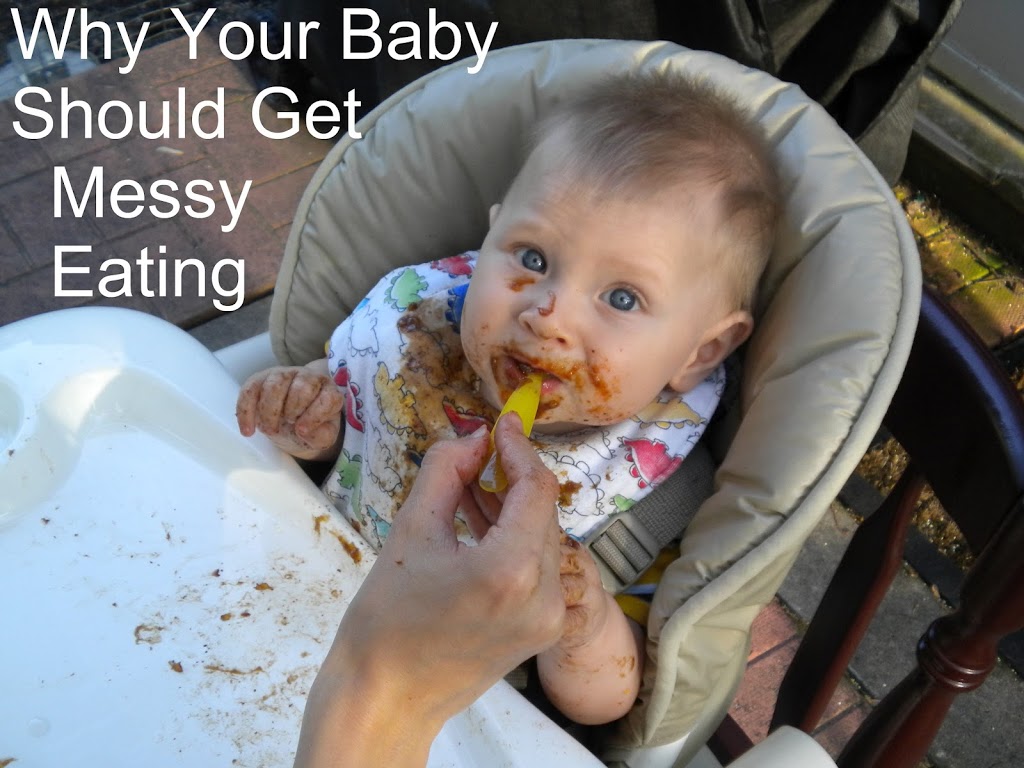
Try to limit them, especially for babies and young toddlers, even if “just one bite” seems harmless.
The dose relative to body weight is considerable.
I’ve searched and searched, and there’s no upside to offering artificial food colors to young children.
Move Forward with Self Feeding WisdomOf course, don’t beat yourself up if you’ve made any of the above baby self feeding mistakes.
Just take a step forward and make the adjustments you need to feed your baby well and with confidence.
That’s the fast path to encouraging self feeding and helping your baby move through his feeding and eating milestones.
Need More Help with Encouraging Self Feeding?My book, The Smart Mom’s Guide to Starting Solids is a quick read that cuts through the fluff and gives you exactly what you need to know to feed your baby in the first year.
A baby feeding schedule, baby feeding chart, baby food stages, baby food chart, when to start solids and more!
Grab your copy today!
Don’t forget to check out our workshops, classes and guidebooks to help you raise nourished children, inside and out.
BABY FEEDING MISTAKES | AVOID These 4 Mistakes & Start Your BABY on a HEALTHY EATING PLAN
Watch this video on YouTube
This post was updated September 2020 from its original.
When to Introduce a Spoon to Baby
Learning how to self-feed is an important milestone in your baby’s development. The messy, but fun, process of teaching your baby how to use a spoon will be the next step in your baby’s journey to self-feeding.
Teaching your baby how to self-feed is going to be a messy process, but will be worth it in the long run. Your baby's motor skills and development will benefit from learning how to self-feed so it is important to encourage this process to your baby. As you begin to approach the age where your baby is ready to start learning how to self-feed, here is everything you should consider.
Where To Start
Finger Feeding
Before you start to think about introducing a spoon to your baby, you first will want to make sure your baby has been introduced to finger foods.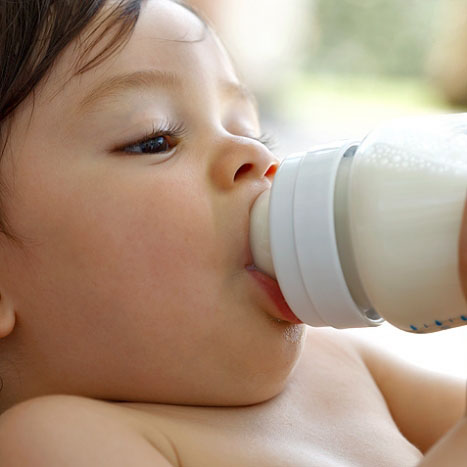 This first step will help your baby begin to develop their motor skills which are necessary to have before figuring out how to use a spoon.
This first step will help your baby begin to develop their motor skills which are necessary to have before figuring out how to use a spoon.
Beginning with finger foods, start with soft foods that you can easily smash with your fingers. This will be the safest and easiest place to start for your baby. Foods such as soft cooked noodles, cut bananas, or steamed veggies are all a good place to begin. Choosing foods that can be cut up into bigger chunks will also make it easier for your baby to be able to pick up.
If you have only been feeding your baby soft foods and purees on your own, you should wait to introduce a spoon until after you have introduced finger foods. At around 12 months, most babies should be feeding themselves finger foods. It is around this stage that you can start to introduce a spoon.
Next Step: Introducing the Spoon
Now that your baby has gotten comfortable with finger feeding, you can take the next step on the self-feeding journey by introducing their first utensil, a spoon.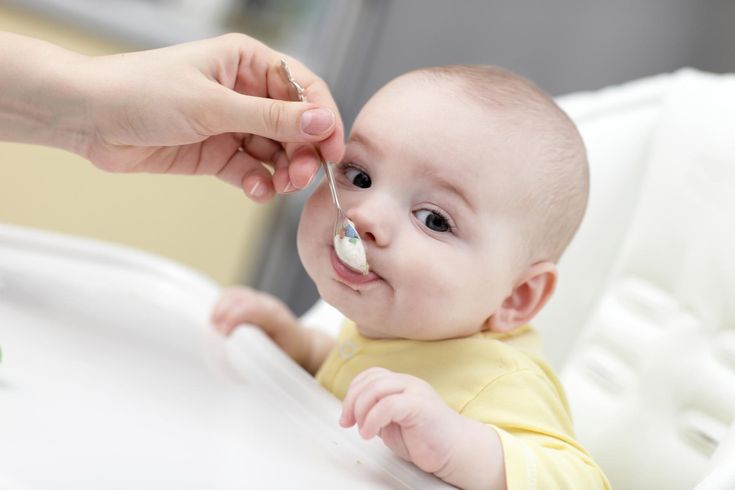 The CDC recommends waiting to introduce a spoon to your baby until they are around 10-12 months old. However, there is no specific age or time that your baby should developmentally be using a spoon. There are many factors that can have an influence on the timing of your baby learning to use a spoon.
The CDC recommends waiting to introduce a spoon to your baby until they are around 10-12 months old. However, there is no specific age or time that your baby should developmentally be using a spoon. There are many factors that can have an influence on the timing of your baby learning to use a spoon.
- Fine motor skill development
- Interest in eating independently
- Time they have been eating solid foods
- First introduced to finger foods
These are all factors that can influence when your baby starts to use a spoon to self-feed. Every child is unique so do not worry about whether or not your baby is successfully learning to use a spoon. They will get there eventually!
Signs They Might Be Ready
It can be tricky to know whether or not your baby is ready to take the next step in their development. One sign that your baby is likely ready to start using a spoon on their own is with their body language. Infants typically will turn their heads and clamp their mouth to signal they are full, after the meal.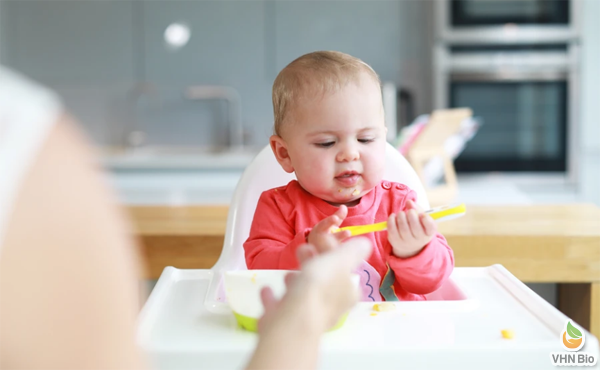 The opposite holds true as they get older. Toddlers will often start to get fussy or throw a tantrum before a meal. If you are noticing that they are appearing disinterested in the spoon you are trying to feed them, let themselves give it a try. This might be their way of telling you they are ready to be more independent.
The opposite holds true as they get older. Toddlers will often start to get fussy or throw a tantrum before a meal. If you are noticing that they are appearing disinterested in the spoon you are trying to feed them, let themselves give it a try. This might be their way of telling you they are ready to be more independent.
Learn more from Pediatrician Dr. David Hill from the American Academy of Pediatrics about when your baby is ready for solids:
Expected Timeline
Depending on your baby, these milestones will be reached at different times than the families around you. However, here is a general guide to understanding when you should plan on your baby reaching these steps to independently self-feeding.
- 6 months: You can begin to start introducing finger foods to build your baby’s fine motor skills.
 Remember to choose foods that are soft and easy to squish to avoid any choking hazards.
Remember to choose foods that are soft and easy to squish to avoid any choking hazards. - 12 months: Around their first birthday, your baby will likely begin showing an interest in using a spoon themselves. This is when you can begin letting your child feed themselves thick, soft foods like oatmeal, yogurt, or applesauce.
- 15-22 months: Your toddlers should be able to start getting the hang of feeding themselves with a spoon. Around this time, you should also be able to introduce using a fork to feed themselves.
Every baby is different when it comes to reaching these developmental milestones. You should never focus too much on whether or not your baby is “on track.” With both time and practice, your baby will get there.
What are the Benefits of Self-Feeding?
Self-feeding is your baby’s first step to independence. In addition to the new confidence and sense of freedom your baby is experiencing, self-feeding is beneficial to their overall development in the following ways.
- Learning to grasp and hold things firmly
- Gaining hand-eye coordination (learning spatial awareness, strengthening their “visual motor skills”)
- Refining Sensory Process skills (the different textures and sensations of the food they are touching will help to build their sensory processing skills)
Things to Consider
Picking the Right Spoon
In general, any spoon that is not too heavy for your baby to hold is the right spoon. However, it is probably a good idea to purchase a set of spoons that are actually designed to be used for babies. Look for spoons that have a wide, chubby handle that will make it easy for your baby to grab and pick up. A spoon made of rubber or silicone will also be better for your baby because of the soft texture and grippy material.
Foods to Start With
Get ready for a big mess when it comes to your baby learning how to use a spoon. At first, your baby will likely spend more time exploring and playing with their food, rather than actually eating it. Start with thick foods that will easily stay on the spoon as they learn how to balance and bring the spoon to their mouth. Here are some recommended foods to start with.
Start with thick foods that will easily stay on the spoon as they learn how to balance and bring the spoon to their mouth. Here are some recommended foods to start with.
- Applesauce
- Cottage cheese
- Mashed peas/carrots
- Mashed potatoes
- Oatmeal
- Pasta
- Pudding
- Yogurt
Introducing the Fork
So, your baby has now mastered the spoon and is ready for their next big step: the fork. It is usually recommended to introduce the spoon before the fork, because a spoon is typically easier for a baby to learn at first. However, some babies do pick up on the fork easier because it requires less balancing and they can stab the food. You will likely want to introduce the fork at around 16-18 months, to give your baby time to first practice and focus on learning how to use a spoon.
What’s Next?
With so many huge developmental milestones being achieved, your baby is rapidly developing. Once your baby has been introduced to the spoon and fork, you can consider moving them from the high chair to a booster seat at the table. By bringing your baby to the table to eat with you, you can help them develop their motor skills quicker. This gives them the opportunity to observe and mirror your actions.
By bringing your baby to the table to eat with you, you can help them develop their motor skills quicker. This gives them the opportunity to observe and mirror your actions.
How Can I Help the Process?
The best way you can help your baby is to simply let them experience and explore this new skill for themselves. At first, you'll probably notice that your baby spends more time playing and waving the spoon around. But eventually, they will start to pick up on how to actually use the tool for their self-feeding benefit.
This is a messy, but fun, process. Look into some rubber or silicone splat mats to make the clean up aftermath easier for you. Other than letting your baby explore and have fun with the learning process, here are some things you can do to help your baby with practicing their new skill.
- Demonstrate it for them: Your baby is looking to you for guidance, so show them how it is done! Have them watch you use a spoon to feed yourself the yogurt or oatmeal and then have them try it for themselves.
 Over time, they will continue to mirror your actions for how to self-feed.
Over time, they will continue to mirror your actions for how to self-feed. - Hand-Over-Hand Method: First, let your baby grab for the spoon themselves. Once they are holding the spoon, see if they can dip the spoon and scoop up the food. You can place your hand over their hand and help guide the food into their mouth. Your baby is still learning all the basics like where their mouth even is and how to scoop food using the spoon so you can help show them the ropes for the first few times.
- Stick to Thick Foods: To make it easier for your baby to scoop and bring the food into their mouth, stick to thick foods at first. Avoid foods that can easily fly off the spoon (rice, cereal, etc.) until they have gotten used to the process.
Baby-Led Weaning: What is it?
Baby-Led Weaning is a popular form of teaching self-feeding. The process skips feeding soft foods and purees and goes straight to finger foods starting at around 6 months. Registered dietician, Clancy Cash Harrison, author of Feeding Baby, says “Baby-led weaning supports the development of hand-eye coordination, chewing skills, dexterity, and healthy eating habits,” she says. “It also offers babies an opportunity to explore the taste, texture, aroma, and color of a variety of foods.”
Registered dietician, Clancy Cash Harrison, author of Feeding Baby, says “Baby-led weaning supports the development of hand-eye coordination, chewing skills, dexterity, and healthy eating habits,” she says. “It also offers babies an opportunity to explore the taste, texture, aroma, and color of a variety of foods.”
What makes baby-led weaning successful, is that your baby will recognize that in order to eat, they need to learn how to do it themselves. It gives an extra nudge into independence. However, parents can obviously step in when needed, in order to make sure their baby is getting enough nutrition from food.
Starting at about 6 months, or whenever your baby is able to sit unassisted in a high chair, you can begin baby-led weaning. Your baby might not have fully developed their chewing skills so breast milk or formula will still need to be their main source of nutrition until at least 10 months old.
The best foods to begin with are soft, easy to squish foods like bananas, steamed broccoli, or avocado. Try cutting the foods into bigger pieces to make it easier for them to pick up. By starting at 6 months, you will help your baby develop the pincer grasp. When considering foods to start with, texture is key. Since your baby does not have the fully developed chewing skills, you will want to make sure any food you are giving them is very soft to avoid a choking hazard.
Try cutting the foods into bigger pieces to make it easier for them to pick up. By starting at 6 months, you will help your baby develop the pincer grasp. When considering foods to start with, texture is key. Since your baby does not have the fully developed chewing skills, you will want to make sure any food you are giving them is very soft to avoid a choking hazard.
If you are thinking of starting baby-led weaning, consider a mixed approach. The first few months of baby-led weaning might be more exploring, and less eating. Do not feel pressure to fully abandon breast milk, formula, or purees. Not all children will be ready for baby-led weaning and finger feeding at 6 months. Focus on making sure your baby is getting enough food, rather than trying to get them to self-feed.
The most important thing to take away from both self-feeding and baby-led weaning is to let your baby lead the process. Let them be the one to reach for the spoon, show their curiosity, and explore their growing independence.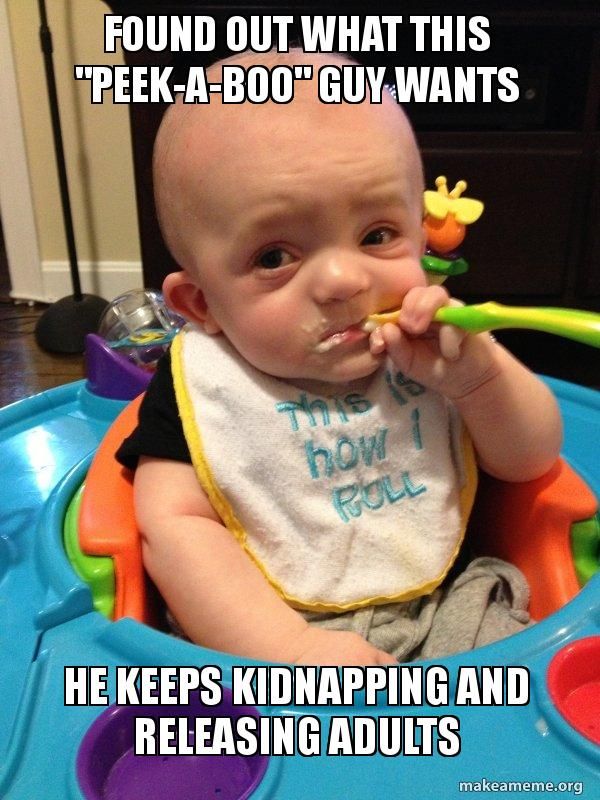 Your baby will be most successful if you let them guide you in this process.
Your baby will be most successful if you let them guide you in this process.
--------------------------------
All health-related content on this website is for informational purposes only and does not create a doctor-patient relationship. Always seek the advice of your own pediatrician in connection with any questions regarding your baby’s health.
These statements have not been evaluated by the Food and Drug Administration. Products are not intended to diagnose, treat, cure or prevent any disease.
See the FDA Peanut Allergy Qualified Health Claim at the bottom of our homepage.
How to teach a child to eat with a spoon and at what age is it better to start
Usually, parents feed their children from a spoon not out of emotion, but for practical reasons: it’s faster and cleaner. Pediatrician Olga Kulakova explains at what age a child can handle eating with a spoon and fork and whether this process can be somehow accelerated.
Question. My daughter is already 1.5 years old, and she just can't eat with a spoon on her own. By what age should a child learn to use cutlery? And are there ways to teach him?
Answer. The first acquaintance of a child with a spoon begins in the first year of life and coincides in time with the beginning of the introduction of complementary foods. At 6–7 months, the baby may begin to show interest in the spoon as an object. This is an excuse to buy another baby spoon and put it next to the plate. Let the child turn it in his hands, examine it and try to use it for its intended purpose.
At around 9 months of age, your baby can start picking up a spoon on their own. But this does not mean that he will be able to scoop up food and bring it to his mouth. Rather, it is about the fact that the child is trying to copy the movements of adults.
A child usually masters a full-fledged spoon by about one and a half years. But here it is important to remember that everything is very individual. Someone already a year old is excellent at using a spoon, and someone is still fed by their parents even at two years old. And it’s not worth worrying that the child is over a year old, and he is still just learning and he doesn’t succeed.
Someone already a year old is excellent at using a spoon, and someone is still fed by their parents even at two years old. And it’s not worth worrying that the child is over a year old, and he is still just learning and he doesn’t succeed.
Under no circumstances should children be forced to master this science. Aggressive training can cause a backlash: the child will no longer want to pick up cutlery.
How to teach a child to use a spoon:
- Have him sit at a common table, let him watch how family members eat.
- Do not force feed your baby. Let him eat with his hands. He will not be able to eat porridge and soup like that - he will have to try to master the spoon.
- Play role-playing games with him more often, in which the child feeds his toys from a spoon.
At this age, the child actively copies the behavior of his loved ones, and it is important that he sees how the whole family eats with cutlery.
Children learn to use a fork around the age of three: at this age they already understand that a fork is a sharp object and can be hurt.
Pay attention to how the child grasps cutlery:
- At 1-2 years old, he holds a spoon in his fist in the middle of the handle.
- By two years - closer to the wide back.
- From the age of three, he can begin to hold the spoon with three fingers: thumb, index and middle.
Sooner or later the child will pick up the spoon and fork on his own as it should be
Children are given large time intervals to acquire certain developmental skills. For example, some children can learn to walk at 9 months, and others by one and a half years, and both will be the norm. The same story with cutlery: one child may become interested in them at 7–8 months, another at 9 months or after a year. All of these are variations of the norm.
However, by the age of two, a child should normally pick up a spoon and try to eat on his own. This does not mean that he will eat all the soup in the bowl, but at least a few spoons he should be able to bring to his mouth.
Ask your question to Mel, and the editors will find someone who can answer it. Write to our social networks - we read all messages on the pages on Facebook, VKontakte and Odnoklassniki. You can also write to us on Instagram. Answers will be published in order of priority in the "Question - Answer" section. By the way, we do not disclose names, so questions can be anything (feel free!).
Prepared by the trainee Anastasia Shirokova. Cover photo: Shutterstock / FotoDuets
What time do children start eating on their own?
Many mothers and fathers are often interested in: what time do children start eating on their own? There is no single answer to this question, everyone is individual. But it is important for parents to know: how to discern the first impulses for independence in time, at what age you can give your baby a spoon, how to teach him to eat without outside help, and what accessories will help the baby master this difficult science.
What time do children start eating by themselves with a spoon?
It depends on the character and development of the child, as well as on his parents. Some children already in the year flatly refuse to be fed with a spoon. But there are those who start eating on their own only at the age of 3, when they come to kindergarten (in a team, children involuntarily imitate others and the learning process goes faster). In large families, children learn self-service skills at an earlier age.
But overprotection hinders the development of the baby. If an overly caring mother tries to do everything for the child, then he will not strive to eat himself, even if he can do it. If parents are too much in favor of accuracy, and porridge smeared on the table causes them stress, then the learning process can slow down. After all, the baby feels the mood of adults, and prefers not to experiment at the table. The lack of independence can also be associated with an unwillingness to grow up. For example, another baby has appeared in the family, and the child, feeling that they are paying less attention to him, tries to “stay small”, wants his mother to take him in her arms more often, feed him from a spoon, etc.
For example, another baby has appeared in the family, and the child, feeling that they are paying less attention to him, tries to “stay small”, wants his mother to take him in her arms more often, feed him from a spoon, etc.
From the age of 7 months a child usually learns to grasp and hold objects between thumb and forefinger, such as a dryer or a piece of bread. The child can be offered a spoon when he is already receiving complementary foods and sits well in the highchair. At first, the baby will only try to take the spoon in his hands and play with it, but later he will try to use it for its intended purpose. For drinking to a baby up to a year, a drinking mug is convenient.
At 12 months the child still does not hold the spoon correctly, but he knows how to bring it to his mouth, and some of the contents can reach the goal. Closer to two years, coordination improves significantly, the baby is capable of more precise movements and misses less and less.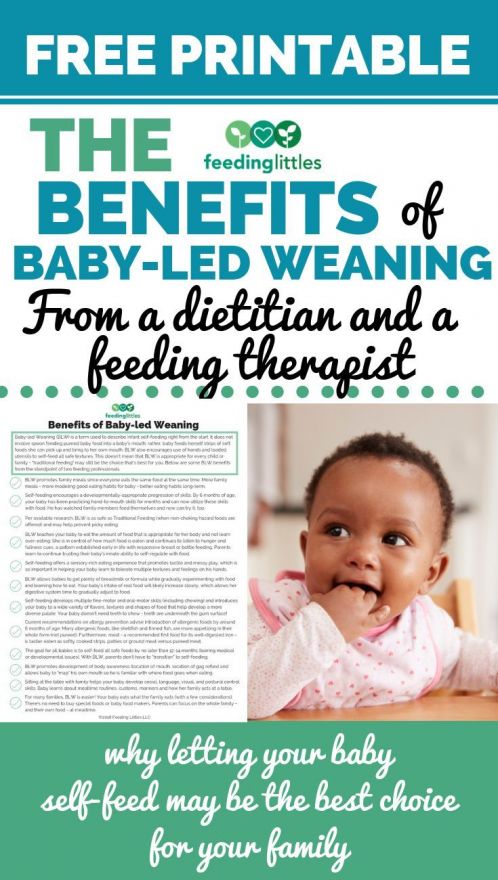 The kid can already hold a regular mug, but only with two hands.
The kid can already hold a regular mug, but only with two hands.
From the age of 2 years a child can eat by himself with a spoon, although he does not always do it sloppy. He already holds a mug with one hand and knows how to use a fork.
From the age of 3 the baby becomes more dexterous and accurate, his fingers are getting stronger, and his movements are more and more confident. It is quite possible to give him a non-sharp children's knife, having previously shown how to use it.
Accessories to help children learn to eat on their own
Buy a baby plate with a suction cup so that the dishes do not run away from the child. It’s good if the child’s favorite character is drawn at the bottom of the plate. To see the picture, the baby will try quickly and eat all the food to the end.
The non-spill cup is the best option when switching to adult dishes. Choose a model with two handles, it is more convenient for your baby to hold. An additional advantage is the presence of a rubber stand, which gives the cup stability.
An additional advantage is the presence of a rubber stand, which gives the cup stability.
A special anatomically shaped spoon with a rounded non-slip handle and a curved fork with rounded teeth are best suited for babies up to a year old.
Paper napkins or towels should always be at hand. This teaches you to be careful, helps to avoid the temptation to wipe your hands on clothes.
It is good if a grown child eats at a common table. He will be able to watch adults, copy their actions. To do this, the baby will need a special chair that can be attached to a large table (for example, high chairs from IKEA, “growing” Stokke Tripp Trapp, Kotokota, KidFix, etc.)
Buy your baby a soft silicone bib, oilcloth or apron. This will help parents save their nerves and spend less time on laundry and cleaning.
How to teach a baby to eat without the help of adults?
If, during feeding, the baby seeks to take away the mother's spoon and tries to eat by himself, then “the time has come”.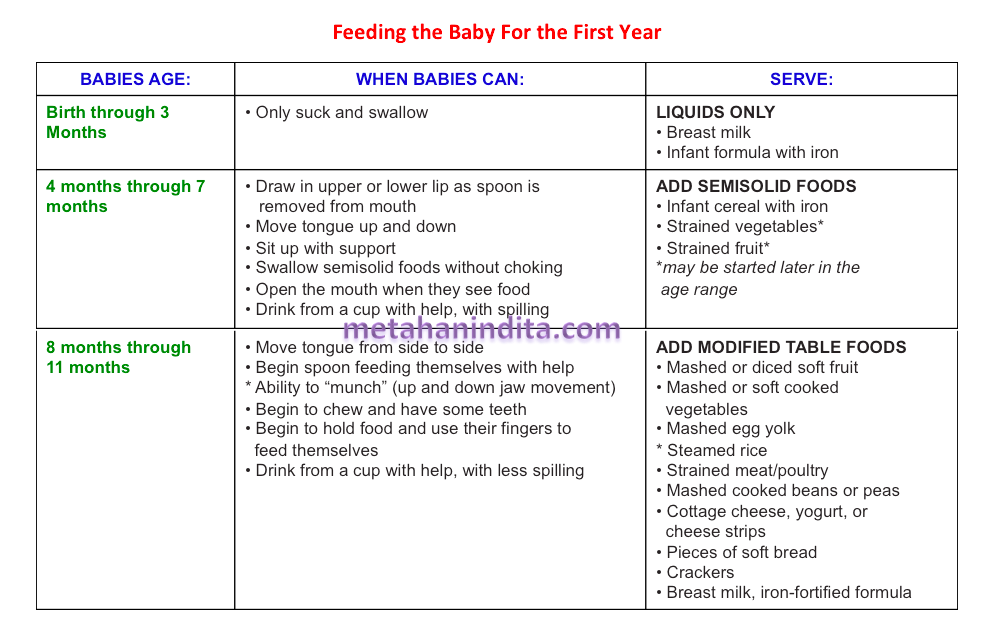 Use this moment!
Use this moment!
At first, it is difficult for the baby to eat liquid food on his own, such as soup. And he probably wants to take pieces of fruit or pasta with his hands. Therefore, the ideal food for the first workouts is porridge or vegetables, which must first be kneaded with a fork.
The game will be a good help in learning. You can train the skill in the sandbox. Help the baby to scoop up the sand with a spatula, carefully pour it into the mold, make a cake. Buy a set of toy dishes, let the child feed dolls and teddy bears with a small spoon. This improves coordination, develops fine motor skills and will help him handle real cutlery.
At the beginning of training, one spoon should be in the hands of the mother, and the second - in the child. She feeds the baby, and the baby is only trying to collect food himself and send it to her mouth. Thus, the baby will not remain hungry and at the same time will gradually improve his skills.
Support the child at this stage of growing up, do not scold for mistakes and praise for successes.
